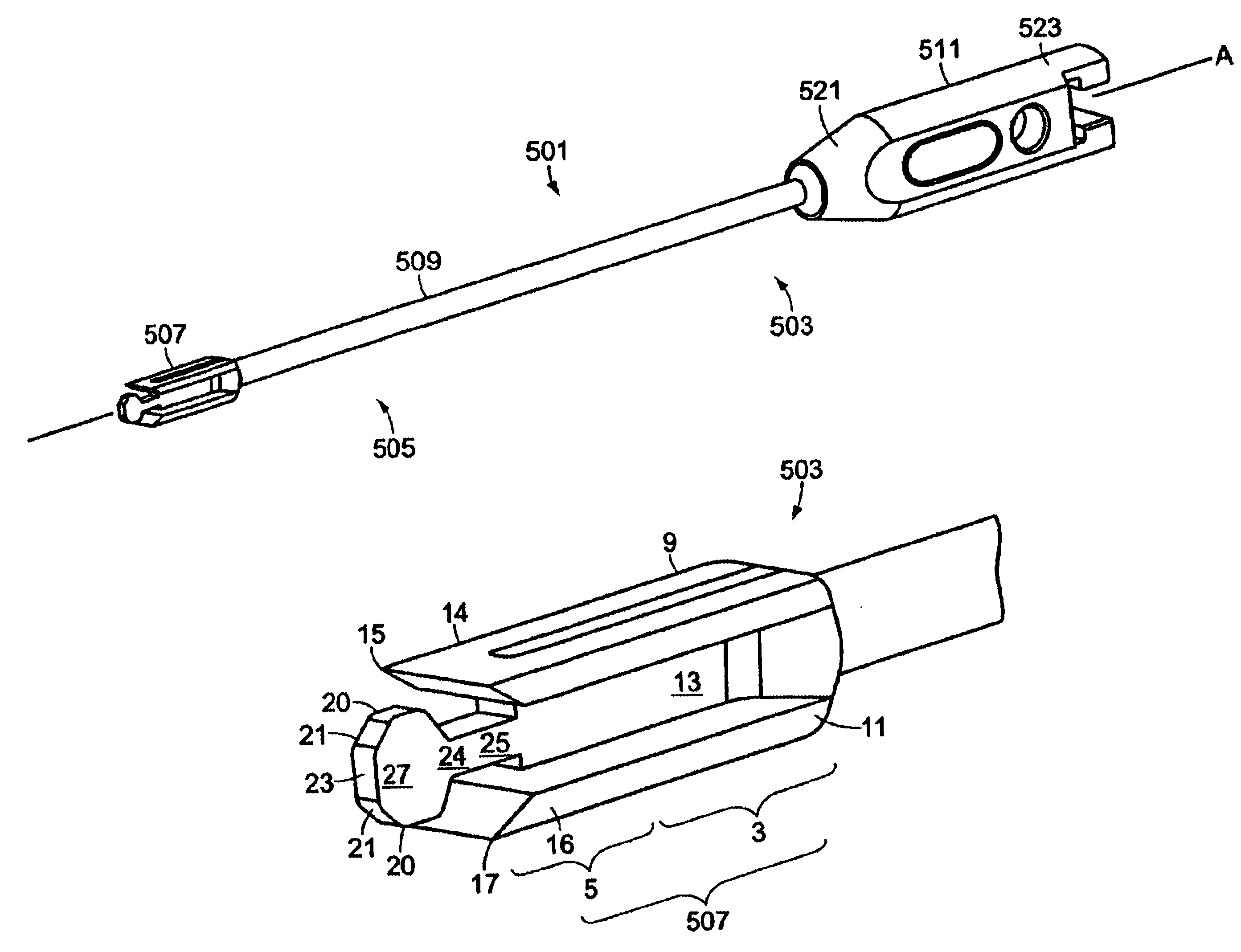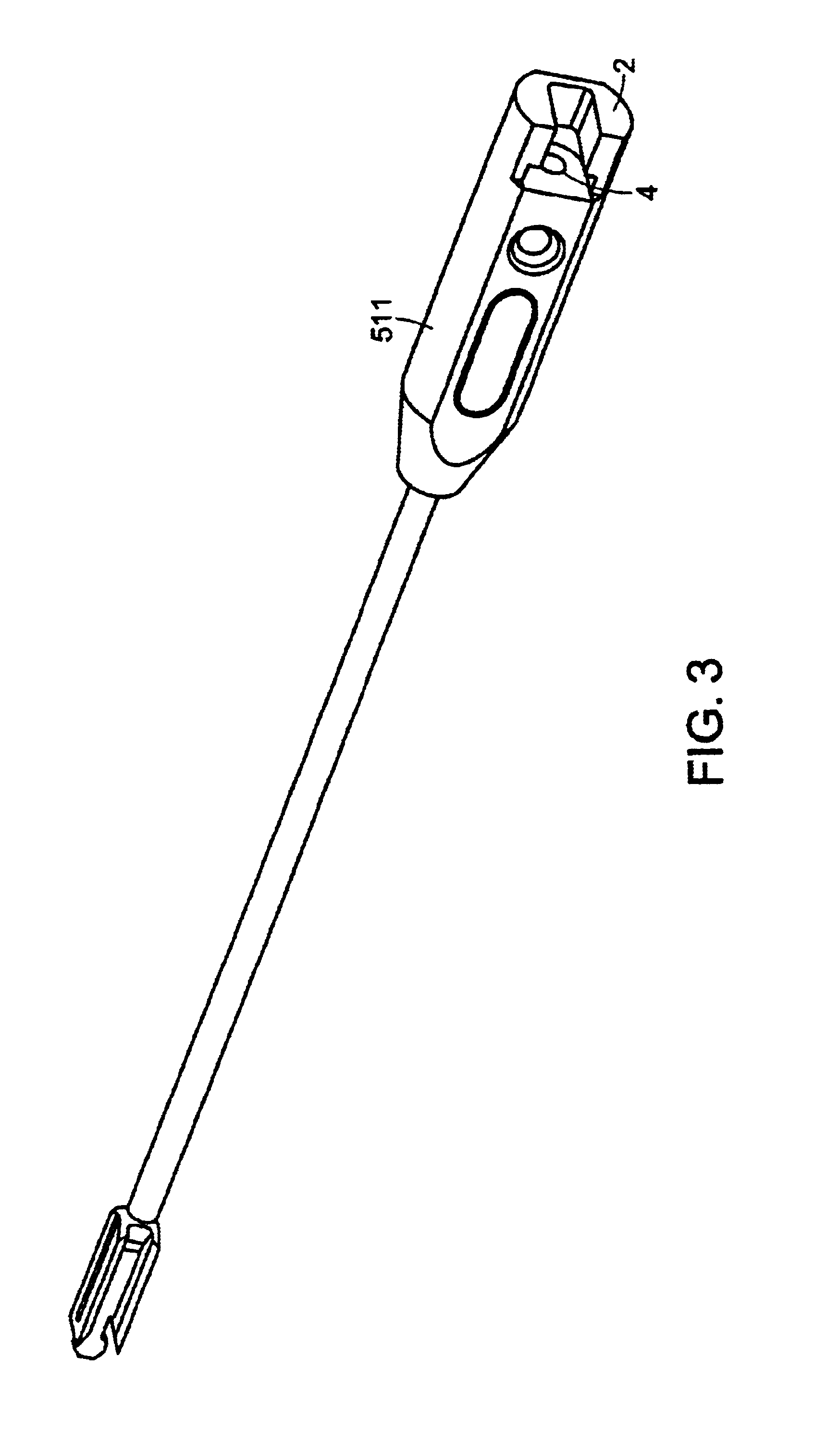Vertebral endplate chisel
a technology of vertebral endplates and chisels, which is applied in the field of posterior lumbar interbody fusion, can solve the problems of increasing the extent of disk space collapse, disc space in which the disc sits, and implants that do not typically fit congruently into the distracted disk spa
- Summary
- Abstract
- Description
- Claims
- Application Information
AI Technical Summary
Benefits of technology
Problems solved by technology
Method used
Image
Examples
example i
Now referring to FIG. 1, the Box Chisel 1 has a proximal portion 503 and a distal portion 505 formed along its longitudinal axis A. Now referring to FIG. 2, at distal portion 505 is a rectangular base 507, having upper 9, lower 11 and intermediate 13 portions. Upper and lower portions 9 and 11 terminate in distally-extending upper and lower shavers 14,16. Intermediate portion 13 terminates distally in a flat thin guide 24 having a neck portion 25 extending from the intermediate portion 13 and a head portion 27 extending from the neck 25. Head portion 27 includes upper and lower land portions 20, upper and lower tapered portions 21, and a flat leading edge 23 formed by the termination of the tapered portions prior to their convergence. Tips 15, 17 of shavers 14,16 terminate distally before the head portion 27 forms its lands 20.
The overall shape of guide 24 can be described as a pancake-like. Now referring to FIG. 6, in one exemplary sized 9×11 Box Chisel, the height HH of the head (...
example ii
In this embodiment, now referring to FIG. 14, the base 207 of the box chisel 201 has an I-Beam-like section 208. The shavers 214,216 extend from the upper and lower base portions 209,211 and are formed by a height-increasing step 229 from the upper and lower base portions 209,211. The step reduces the stiction of the device. The guide 224 includes a i) neck portion 225 which widens as it extends distally and ii) a thin head portion 227 which has a rounded cross-section terminating in a flat leading edge 223.
example iii
Now referring to FIG. 12, this device includes a head 307 having lands 320 and a bullet-shaped distal section 321. The neck portion 325 of the guide includes both a rod-like section 360 and a widening section 361. The base 307 includes a substantially blocky proximal section 306 and an I-beam-like section 308.
PUM
 Login to View More
Login to View More Abstract
Description
Claims
Application Information
 Login to View More
Login to View More - R&D
- Intellectual Property
- Life Sciences
- Materials
- Tech Scout
- Unparalleled Data Quality
- Higher Quality Content
- 60% Fewer Hallucinations
Browse by: Latest US Patents, China's latest patents, Technical Efficacy Thesaurus, Application Domain, Technology Topic, Popular Technical Reports.
© 2025 PatSnap. All rights reserved.Legal|Privacy policy|Modern Slavery Act Transparency Statement|Sitemap|About US| Contact US: help@patsnap.com



